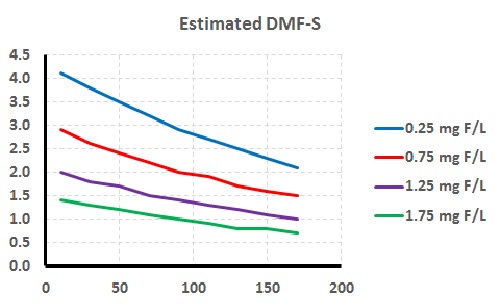TONY BROWN Daily News-Recor
HARRISONBURG — The use of sodium fluoride in public drinking water to prevent tooth decay, hailed by many as a public health breakthrough but decried by others, could be headed down the drain in the city.
Thanks to a leaky tank at the water treatment plant, Harrisonburg City Council on Tuesday will consider repealing, at least temporarily but possibly permanently, the 1973 ordinance requiring the addition of fluoride to the municipal water supply.
City Attorney Chris Brown said in a memo to City Manager Kurt Hodgen that he doesn’t want the city to break its own laws while the fluoridation system is shut down so that the tank that holds the chemical compound can be replaced.
“We have no mechanism by which we can suspend the ordinance,” Brown said in an interview Friday. “So, we will have to repeal it.”
Meanwhile, Mike Collins, city director of utilities, said he believes the decade-old leaky tank provides a good opportunity to study whether replacing the tank every 10 years, on top of spending $20,000 a year on supplies to treat the water with fluoride, is a good way to spend taxpayer dollars.
“We need time to scope it out,” Collins said. “And we need time to fix it. In addition to replacing the tank, we need to do other improvements.
“There are a significant number of assets needed to fluoridate water. It is introduced to the water using an acid, and there are side effects that affect the life of other assets besides the tank.”
Collins said he didn’t yet know how much it would cost to replace the tank and make the other improvements.
In his memo, Brown said, “Many localities have determined that there is little benefit of fluoridation of water systems when compared to the significant costs associated with fluoridation.”
The Centers for Disease Control and Prevention, which calls fluoridation of water one of the greatest health improvements of the 20th century, says it costs an average of $1.02 per person per year. Public water fluoridation is also endorsed by the American Dental Association and other groups.
About 66 percent of the U.S. population consumes fluoridated water, the CDC says.
But some U.S. municipalities and counties that once fluoridated have decided to stop, saying there are many other ways children and adults get fluoridation treatment, including toothpaste, gels and mouthwashes.
In the Shenandoah Valley, fluoridation of the public water supply divided the town of Timberville for 18 months in 2008-09 before Town Council voted 4-3 to continue the practice.
Amherst County decided to end the practice in 2014. Earlier this year, Albuquerque, N.M., did, too.
In other parts of the industrialized world, fluoridation of water is the exception, not the rule, including Western Europe. Consumers in some countries are offered a choice of buying fluoridated salt and milk. Fluoride is a naturally occurring chemical in many underground water supplies and rivers.
Opposition forces include the Fluoride Action Network and its website,
fluoridealert.org. The group questions the use of fluoride in dental cleaning products in addition to opposing its use in water. The group cites health concerns, calling fluoride a poison that can damage teeth, as well as individual rights over what people consume.
Opposition to the practice has been around as long as the practice itself.
Scientific investigation of the use of fluoride to prevent tooth decay has roots in the early 19th century. Using fluoride in public water supplies has been around since 1945 and became widespread in the 1960s.
During and after the Red Scare of the 1950s, some opponents of fluoridation of public water drinking supplies claimed it was a communist plot. Famously, that argument was lampooned in Stanley Kubrick’s 1964 film comedy “Dr. Strangelove.” In the movie, a character named Gen. Jack D. Ripper says he believes that fluoridation threatens the “purity of essence” of his “precious bodily fluids.”
But in 2016 in Harrisonburg, the issue is money, Collins said.
“There is a lot of information out there about fluoridation,” he said. “A lot of people are for it, and some people are against it. We just need to scope it out and see if it is worth it.”



